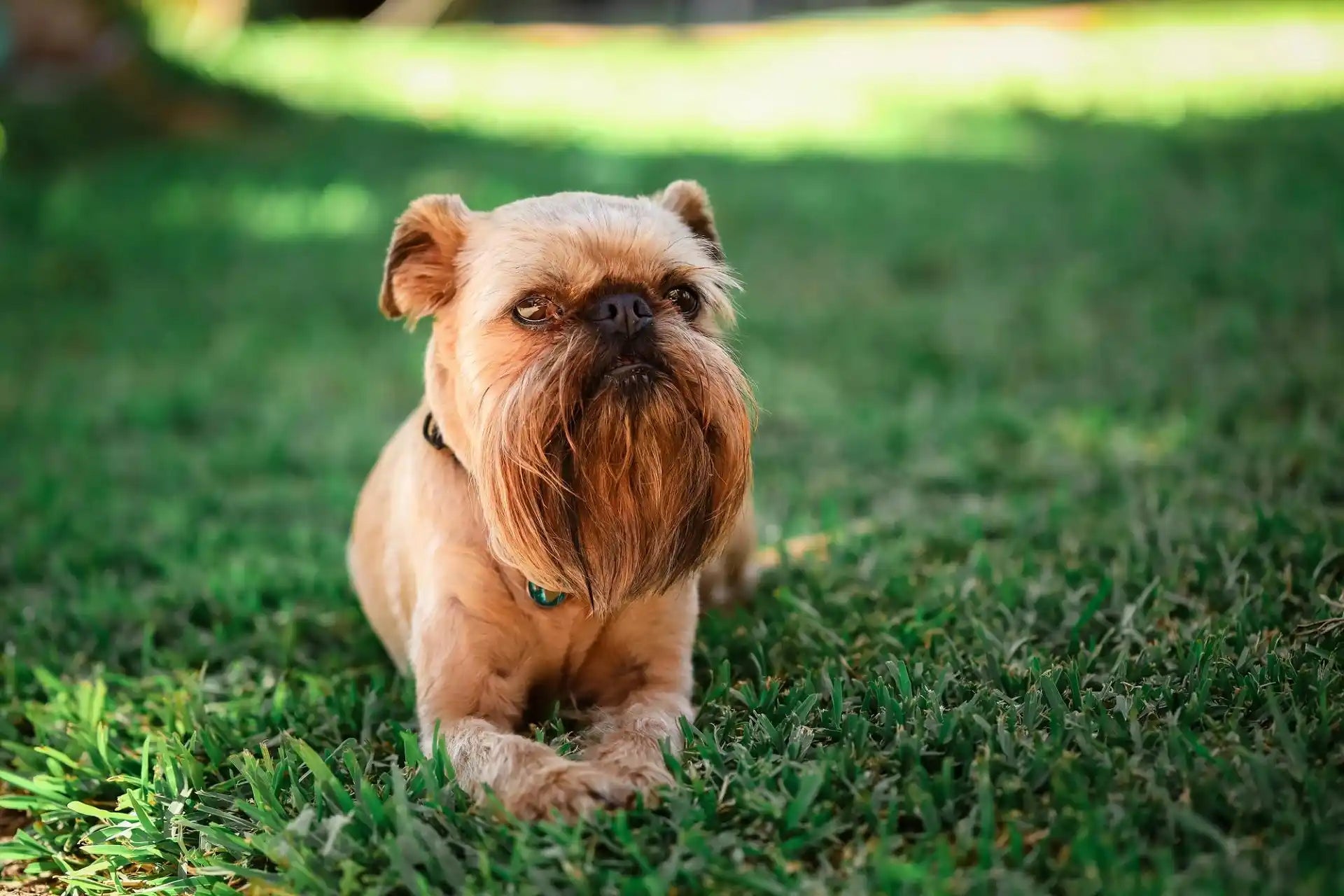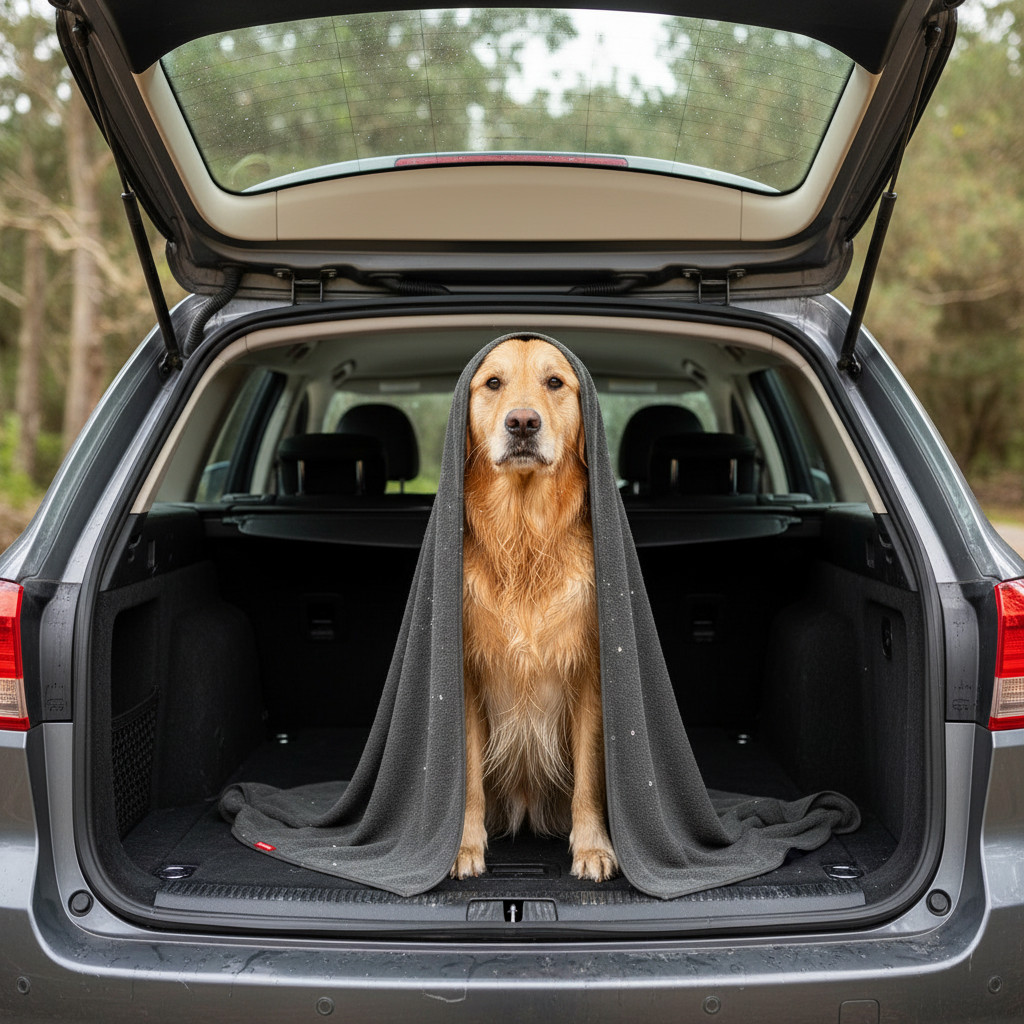
Brussels Griffon Dog Breed: History, Care, Training & Health Insights
The Brussels Griffon may be small in size, but this breed has a big personality and a strong presence. Known for their expressive faces and affectionate nature, Brussels Griffons form deep bonds with their families and thrive in homes where they are given plenty of attention.
In this guide, we’ll answer the most common questions about Brussels Griffons to help you better understand if this delightful breed is the right fit for your lifestyle.
Quick Facts Overview
|
Trait |
Details |
|
Size Category |
Toy |
|
Height & Weight |
Height: 18–28 cm; Weight: 3–6 kg |
|
Coat Type & Colours |
Smooth or rough coat; colours include red, black, black & tan, belge |
|
Energy Level |
Moderate |
|
Origin |
Belgium |
|
Grooming Needs |
Moderate to High |
|
Temperament |
Loyal, alert, curious, sensitive |
|
Trainability |
High |
|
Compatibility |
Great for singles, families, and apartment living |
|
Lifespan |
12–15 years |
Breed Origins and History
The Brussels Griffon was developed in Belgium in the 19th century, originally bred to hunt and eliminate rats in stables. Their lineage includes Affenpinschers, Pugs, and English Toy Spaniels, blending terrier tenacity with a charming, lively spirit. Over time, their endearing appearance and quirky personalities made them highly popular companions, even winning favour with European nobility.
Personality and Temperament
The Brussels Griffon is often described as "a big dog in a little body." They are affectionate, spirited, and highly people-oriented. These dogs form strong bonds with their families and thrive on attention and involvement in daily life. While they can be wary of strangers initially, once a Griffon warms up, they are playful and full of personality. Their sensitive nature makes them unsuitable for harsh training methods—they respond best to gentle, positive reinforcement.
Trainability and Intelligence
Brussels Griffons are bright and eager to please, making them highly trainable with the right approach.
-
Start training early, focusing on consistency and patience
-
Positive reinforcement—treats, praise, and play—works best
-
They excel in obedience, trick training, and even agility
-
A soft, lightweight training harness keeps them secure and comfortable during sessions
-
Use a handy treat bag to reward behaviours promptly
Exercise and Activity Requirements
Despite their toy size, Brussels Griffons are energetic and benefit from daily exercise.
-
30–45 minutes of daily walks and playtime
-
Enjoy indoor games, short walks, and structured training
-
Mental stimulation through puzzle toys and trick training is crucial
-
A hands-free lead makes it easy to stay active with your Griffon
-
Griffons love spending time with their humans, whether indoors or outdoors
Physical Characteristics
Small but sturdy, Brussels Griffons have a distinct and memorable appearance.
-
Height: 18–28 cm
-
Weight: 3–6 kg
-
Coat: Two types — smooth (short) and rough (wiry)
-
Colours: Red, black, black and tan, belge (black and reddish-brown mix)
-
Best fitted with small dog gear
Living Environment Suitability
Brussels Griffons adapt exceptionally well to a variety of living environments.
-
Perfect for apartment living or houses
-
Thrive when included in daily family activities
-
Prefer not to be left alone for long periods
-
Sleep soundly on a supportive orthopaedic dog bed
-
Travel safely with a secure dog car harness
Grooming and Maintenance
Grooming needs vary depending on coat type.
-
Smooth-coated Griffons: Weekly brushing and occasional baths
-
Rough-coated Griffons: Regular brushing and hand-stripping to maintain coat texture
-
Regular ear cleaning, nail trimming, and dental care are essential
-
A soft collar helps avoid coat breakage and irritation
Common Health Issues
Brussels Griffons are generally healthy but can be prone to a few conditions.
-
Common concerns: brachycephalic syndrome (short-muzzled breathing issues), hip dysplasia, eye conditions like cataracts
-
Maintain a healthy weight to reduce breathing stress
-
Regular vet check-ups are important for early detection
-
Orthopaedic support with a quality dog bed benefits overall wellbeing
Diet and Feeding Guidelines
A high-quality diet keeps Griffons energetic and in good health.
-
Puppies: Feed 3–4 small meals daily
-
Adults: Feed 2 small, balanced meals daily
-
Opt for small-breed formulas rich in joint and dental health support
-
Fresh water should always be available
-
Portable food and water bowls are handy for outings
Compatibility with People and Other Pets
Brussels Griffons are affectionate and social when properly raised.
-
Bond deeply with their primary family members
-
Can live peacefully with other dogs and pets if socialised early
-
Prefer respectful, gentle interactions, especially with children
-
Manage walks with multiple pets using a coupler lead
Behavioural Issues and Management
Griffons can become clingy and anxious if left alone too often.
-
Regular companionship and stimulation prevent separation anxiety
-
Training sessions, puzzle toys, and structured activities help focus their energy
-
A no-pull harness helps with polite walking
-
Rotate durable toys to prevent boredom and chewing
Essential Gear for Brussels Griffons
Walking and Training
Comfort and Rest
Fun and Enrichment
FAQs: Brussels Griffon Dog Breed
1. Is a Brussels Griffon a good pet?
Yes, Brussels Griffons make excellent pets for the right household. They are affectionate, full of character, and form strong bonds with their people. While they may be small in size, they’re known for their big personalities and make loving companions for individuals and families alike.
2. Are Brussels Griffons high maintenance?
Brussels Griffons can be considered moderately high maintenance. Their coat requires regular grooming—especially the rough-coated variety—and they are emotionally sensitive dogs that need daily interaction and engagement.
3. Do Brussels Griffons bark a lot?
They can be quite vocal, especially if they are anxious or under-stimulated. With proper socialisation and positive training, unnecessary barking can be reduced, but they may still alert you to visitors or changes in their environment.
4. Do Brussels Griffons like to cuddle?
Yes, Brussels Griffons are affectionate and love being close to their owners. Many enjoy snuggling on the couch or curling up in your lap. They are known for being “velcro dogs,” meaning they thrive on human companionship.
5. Can Brussels Griffons be left alone?
Brussels Griffons don’t enjoy being left alone for long periods. They are companion dogs and may develop separation anxiety if left too often without company. It’s best to gradually train them to be alone and provide interactive toys when needed.
6. Do Brussels Griffons have separation anxiety?
Yes, they are prone to separation anxiety due to their strong attachment to their owners. Symptoms can include barking, chewing, or distress when left alone. Early independence training and structured routines can help reduce anxiety.
7. How much exercise does a Brussels Griffon need?
Brussels Griffons are small but energetic. They need at least 30 to 45 minutes of daily exercise, which can include walks, play sessions, or short training activities. Despite their size, they benefit from physical and mental stimulation.
8. What are the cons of Griffons?
Some potential drawbacks include their sensitivity, tendency to bark, and strong attachment to their owners, which may lead to separation anxiety. They also need regular grooming and are better suited to calm homes where they are not left alone too often.
9. Are Brussels Griffons expensive?
Yes, they can be. In Australia, a Brussels Griffon puppy typically costs between $4,000 and $6,000 depending on the breeder, bloodline, and availability. Their rarity, health testing, and careful breeding contribute to the cost.
10. Are Brussels Griffons easy to train?
They are intelligent but also a bit stubborn. Brussels Griffons respond well to positive reinforcement but need consistency and patience. Early socialisation and short, fun training sessions help them learn effectively.
Final Thoughts
Brussels Griffons are intelligent, affectionate companions who thrive on human connection. While they do require regular grooming, patience in training, and careful attention to their emotional needs, they reward their owners with unwavering loyalty and charm. For those seeking a small dog with a large heart, the Brussels Griffon can make a wonderful addition to the family.
Looking for the best gear for your Brussels Griffon? Visit EzyDog for premium-quality products designed for smart, stylish small dogs like the Griffon.





Leave a comment
This site is protected by hCaptcha and the hCaptcha Privacy Policy and Terms of Service apply.